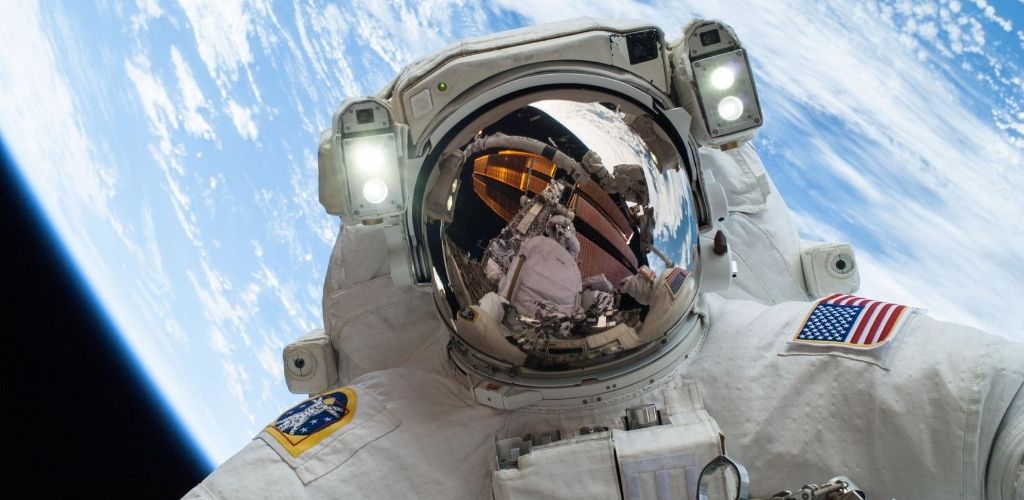
Do you dream of becoming a NASA astronaut? To stay in the International Space Station, to go to the Moon as an “Artemis Generation” astronaut, or even to go to Mars? Have you verified that you meet the NASA astronaut requirements? That’s excellent news ! But you’re far from the only one …
In fact, 10,000 to 20,000 people apply to become an astronaut in each NASA recruitment campaign. At the end of the selection process, less than 0.1% of candidates are selected by NASA to begin astronaut training, making it the most difficult job in the world!
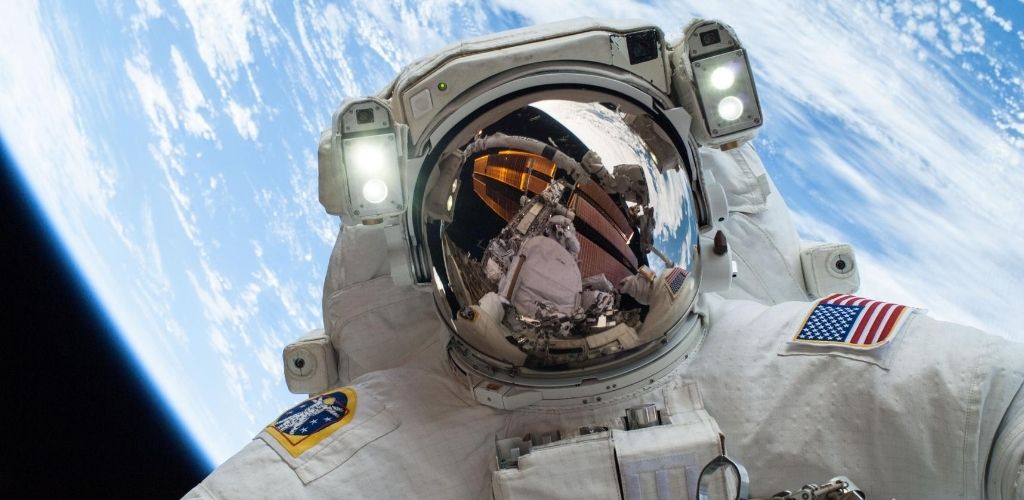
You also have to be patient if you decide to apply. In fact, the NASA astronaut selection process spans a period of one to one and a half years between the publication of the job offer and the final selection. There is still a long way to go before you can fly to space.
So how are NASA astronauts selected? What are the stages of the selection, what to expect? How to put all the chances on your side to fulfill your dream of becoming an astronaut? On this page we detail the whole NASA astronaut selection process step by step. Follow the guide!
Step 1: Publication of a NASA Astronaut Selection Offer
Frequency: approximately every 4 years.
NASA is setting up campaigns to select new astronauts. This means that the NASA astronaut selection offers are published only when NASA wishes to open a new “class” of astronauts to carry out its missions. It also means that you cannot send an unsolicited application to become a NASA astronaut, it will not help.
The publication of a NASA astronaut selection offer is a very rare event. In the past, NASA has selected a new class of astronaut candidates approximately every 4 years. The last astronaut selection offer was published in March 2020 to select the Astronaut Candidates for the 2021 class. The next NASA astronaut selection offer will likely be published in 2023 for the 2024 class.
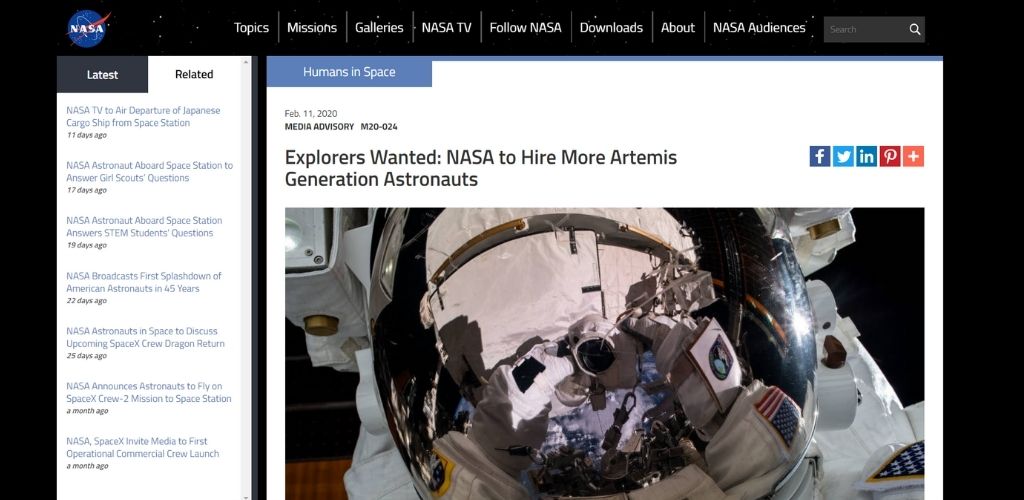
Moreover, it is also a very ephemeral event. Applications were open for 2 months during the recruitment campaign which took place from mid-December 2015 to mid-February 2016. But during the 2020 recruitment campaign, applications were open for only 1 month, in March 2020! That means that wannabe astronauts have a real interest in preparing their application in advance.
Finally, you should know that these offers are a huge success with wannabe astronauts located all over the U.S.A: more than 12,000 people applied to become a NASA astronaut during the March 2020 recruitment campaign, announced 3 weeks before publication of the offer. The competition is very high, so it is better to know what to expect to put the odds in your favor. Don’t panic, in “Step 2: Responding to the job offer” we will see what a NASA astronaut job offer looks like.
Still motivated? The best strategy to be ready to apply on D-day is therefore:
- prepare your candidacy before the announcement of the publication of a NASA astronaut selection offer
- and to subscribe to the NASA social media pages and to the NASA newsletter (or to subscribe to the From Space With Love newsletter, we will send you an email as soon as the next offer is published.
Step 2: discover and respond to the job offer
Duration: 1 to 2 months
Like all US public companies, NASA publishes its vacancies on the USAJOBS site. Want to see what a NASA astronaut selection offer looks like?
- 2020 job offer (applications open from March 2 to 31, 2020)
- 2016 job offer (applications open from mid-December 2015 to mid-February 2016)
A NASA astronaut selection offer is structured the same way as other job offers.
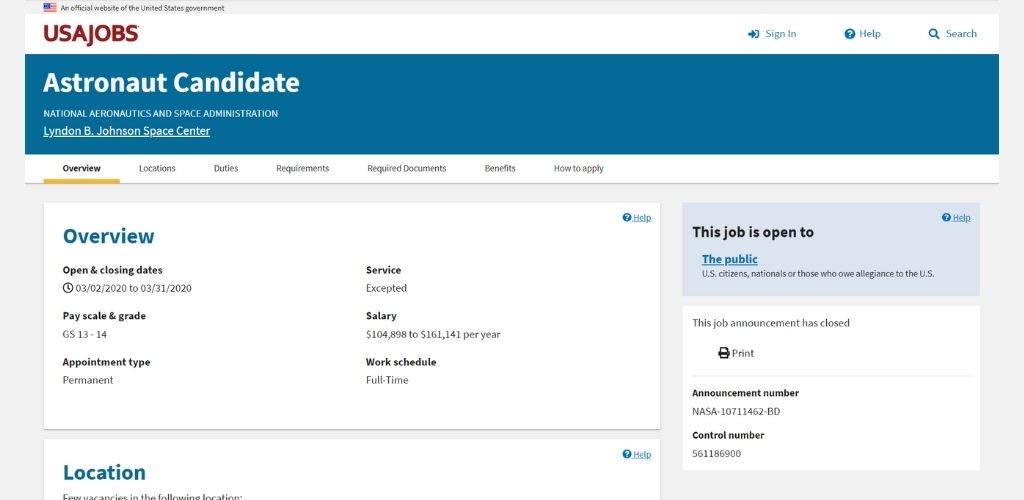
Overview
General information about the position such as dates to respond, type of job, salary, etc.
Locations
Location of the post. Even if you will have to make a lot of travels as part of your training and your profession as a NASA astronaut, the job offer says “Houston, Texas” which is the location of the NASA headquarters for manned space missions, the Lyndon B. Johnson Space Center (formerly Manned Spacecraft Center).
Duties
This is the description of the missions to be carried out within the framework of the position. If you have followed the space missions of other astronauts, you are already familiar with the content of this section:
- carry out missions in space aboard the ISS or spaceships
- perform extravehicular activities in space (EVA, also called “spacewalks”) and handle robotic devices
- carry out scientific experiments in space and maintenance operations
- participate in the development of new space vehicles and in the simulation phases
- represent NASA in the U.S.A. and around the world
Requirements
You already know the requirements to become a NASA astronaut if you have read our page about NASA astronaut requirements. However, check on the job offer that there has been no recent changes before applying.
Required documents
- A resume which details your relevant experiences for the job, submitted using the site tool (USAJOBS Resume Builder), and at least 5 references, including your last manager
- Online assessment and questionnaire. Indeed, during the 2020 astronaut recruitment campaign, NASA set up an online assessment (Online Assessments Required for Astronaut Candidate) to make a first selection of the many candidates (as a reminder, 12,000 people applied). It also allows applicants who have scored too low to know that they will not be selected. The online assessment is made up of 3 parts:
- Assessment #1: Professional experiences. This is a non-timed MCQ, which takes around 20 minutes to complete.
- Assessment #2: OPM (Office of Personnel Management) essay. It is a timed essay that lasts 25 minutes.
- Assessment #3: Assessment on the way to work. It is a non-timed single-choice MCQ. USAJOBS says that responding to this questionnaire takes 30 minutes, but in fact many candidates have said on social networks that they spent 2 hours there.
- All transcripts from an accredited university (list here) where the diplomas listed in NASA astronauts requirements were obtained, or the end of course certificate from a test pilot school (or a registration certificate).
- People with flying experience must additionally fill out a specific form.
Our advice: check everything before submitting your application! Once the application period has closed, you will no longer be able to make any changes.
Step 3: additional online assessments
Once you have submitted your application to become a NASA astronaut, a message will appear on your screen and will be emailed to inform you whether or not you are selected to perform additional online tests on the “USA Hire Assessments” system. If you are selected, you then receive a link to access additional online assessments. Approximately 2 hours (often less) are required for these additional online assessments.
Step 4: review of applications
Duration: 5 months.
Did you pass the additional online assessments? You are one of the Qualified Applicants. NASA then proceeds to review the applications to determine a shortlist of Highly Qualified Applicants who will then be called in for interviews, medical assessments and activities (detailed in step 5 below).
In 2020, following the submission of applications, this review period lasted 5 months, in particular thanks to the implementation of online assessments, which made it possible to considerably reduce the volume of applications to be reviewed. During the 2016 recruitment campaign, this period lasted 7 months.
During this review period, people who work in various NASA departments, including Human Resources and the NASA Astronaut Selection Office, come together to select a shortlist of Highly Qualified Candidates. To make this selection, they look at the candidate’s education and professionnal background, his skills in decision-making and leadership, if the candidate seems sociable, etc.
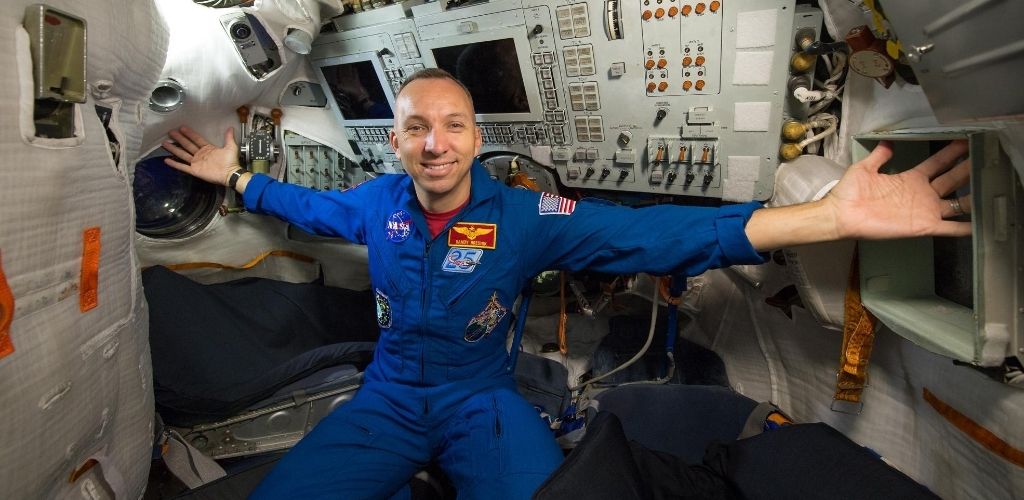
To make this list, NASA first groups the applicants into groups of applicants with homogeneous characteristics, to avoid comparing fighter pilots with professors. Candidates are then scored and ranked within their group.
Gone are the days when you had to be an experienced fighter pilot to be able to become an astronaut! Nowadays, NASA wishes to recruit various profiles to compose its crews of astronauts. NASA spokesperson Stephanie Schierholz said: “We’re looking for more than just degrees, we want crew members to have a variety of experiences.”
The practice of piloting and scuba diving is however a real asset to be selected, as Ms. Schierholz underlines: “These activities are potentially fatal and are very demanding, require high knowledge and the ability to make quick decisions. They show that a person can withstand this type of environment, which is obviously important.”
During the application review period, NASA sometimes sends fill-out forms to the references that the applicant provided when submitting their application.
Step 5: interviews, medical assessments and activities
Duration: 8 months
Highly Qualified Applicants selected by NASA following the review of applications are invited to the Manned Missions Space Center, the Lyndon B. Johnson Space Center, located in Houston, Texas. In 2016, 120 applicants reached this stage out of the 18,300 applicants who responded to NASA’s astronaut selection offer.
In this final stage, applicants have to pass interviews, medical evaluations and participate in activities. This step is broken down into three phases. At the end of each phase, applicants are selected and others are eliminated from the selection process.
- Phase 1 (4 months):interviews with Highly Qualified Applicants. Half of the candidates called for interview are eliminated at the end of this phase.
- Phase 2 (2 months): successful applicants at the end of the first phase undergo additional interviews and participate in medical and physical assessments, as well as other activities. Medical evaluations are performed by doctors at the Flight Medicine Clinic, who examine the general health of applicants to take the physical test for long-duration spaceflight (Astronaut Long-Duration Spaceflight Physical).
- Phase 3 (1 to 2 months): the applicants selected at the end of the second phase participate in other team-building activities.
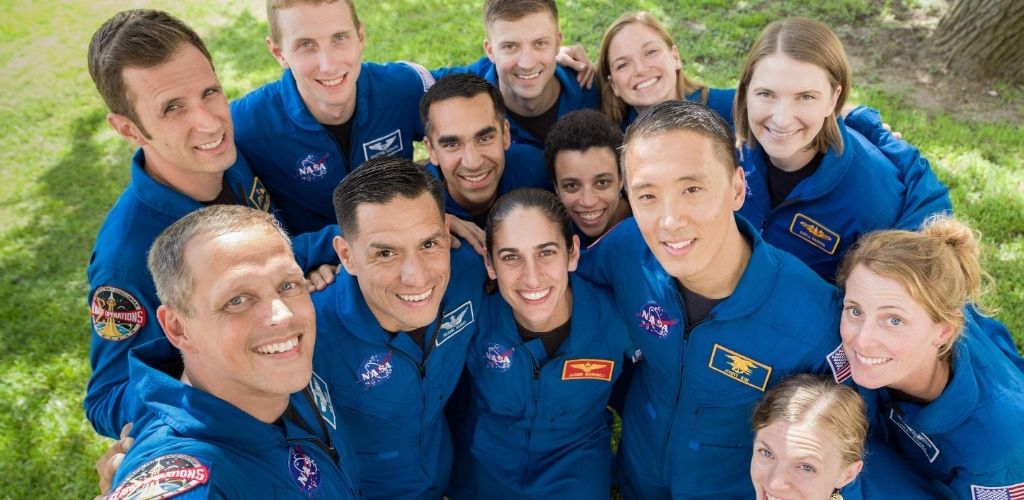
The purpose of the interviews is to answer the question “Would I like to go into space with this person?”. NASA is therefore seeking to recruit altruistic and versatile personalities. For this, NASA is therefore looking for answers to questions such as:
- Why do you want to become an astronaut? Is it a passion, or maybe just because you think it will be fun?
- Do you know how to fix things, like a car or a computer for example?
- Are you a good communicator?
- How do you collaborate with others and how do you react to change?
- Will you be a good representative of NASA once you are an astronaut?
- Is your personality too strong? Do you know how to blend into a group, act as a team?
- Who are you as a person?
Step 6: final selection of astronauts and official announcement
Duration: 2 months
At the end of the last selection phase at the Johnson Space Center, about fifteen people from the NASA Astronaut Selection Board select the Astronaut Candidates (or ASCANs) who make up the new class of NASA astronauts. The 2017 astronaut class, selected following the NASA astronaut selection offer published in early 2016, was made up of 13 Astronaut Candidates.
NASA then officially announced the list of Astronaut Candidates selected to participate in future American space missions. Two months after this official announcement, the Astronaut Candidates return to the Johnson Space Center to begin the NASA astronaut training.
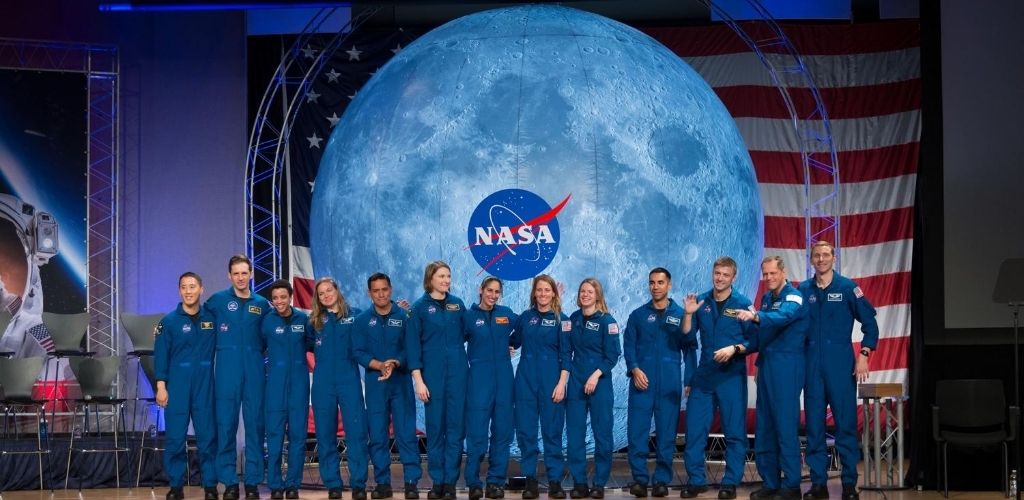
How to become a NASA astronaut?
- NASA astronaut requirements
- NASA astronaut selection process
- NASA astronaut training
- Advice and strategies to become astronaut
Images credit: NASA